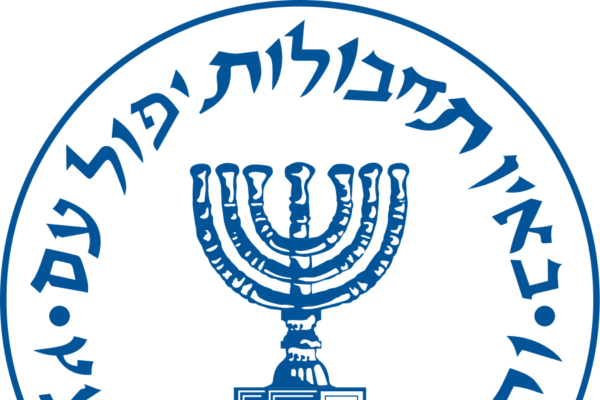Recently, the simultaneous explosions of pagers and walkie-talkies belonging to Hezbollah members in Lebanon have once again brought attention to Israeli intelligence agencies. Although no organization has claimed responsibility for the incident, many believe that this precision strike, minimizing harm to civilians, is likely orchestrated and executed by Mossad. Let’s delve into this mysterious and daunting Israeli intelligence agency.
Mossad, short for the Institute for Intelligence and Special Operations, is one of Israel’s three major intelligence agencies, alongside Aman (Military Intelligence) and Shin Bet (Internal Security). Mossad’s main responsibilities include foreign intelligence collection, intelligence analysis, and secret operations.
Formally established in December 1949, Mossad took over a year to become operational, facing initial challenges until Isser Harel, former head of Shin Bet, took charge in 1952. During his 11-year tenure, Harel transformed Mossad into a highly efficient and professional organization capable of global operations, including tracking down former Nazi officials, rescuing hostages, and targeting terrorist leaders for assassination.
One of Mossad’s earliest significant international operations, and one of its most acclaimed, was the capture of Nazi official Adolf Eichmann. Eichmann, known as the “Architect of the Holocaust,” played a key role in Hitler’s genocide against the Jewish people. After World War II, he fled Germany like many other Nazi fugitives, seeking refuge in South America.
Operating under the alias Ricardo Klement in Buenos Aires, working at a Mercedes-Benz dealership, and living a seemingly ordinary life as a father of three, Eichmann evaded capture for years until a Mossad team discovered his true identity.
A German immigrant of Jewish descent informed Mossad that his daughter was dating a young man claiming to be Nick Eichmann, who expressed anti-Semitic views during dinner, raising suspicions about his identity.
The agents managed to locate Nick Eichmann’s address, photographed his father, and swiftly confirmed that the seemingly benign family man was indeed Adolf Eichmann.
Mossad’s seven-member team captured Eichmann on his way back to Buenos Aires, pushing him into a car and swiftly transporting him to a safe house. As the German government refused to extradite him from Argentina, Mossad smuggled the Nazi official out of the country and brought him to Israel.
Eichmann was tried for war crimes, found guilty in 1962, and executed.
The Eichmann operation marked a pivotal moment in post-World War II pursuit of Nazi war criminals, remembered by many and inspiring several publications and film adaptations.
At the 1972 Munich Olympics, the Palestinian extremist group Black September kidnapped and eventually killed 11 Israeli athletes, marking one of the darkest moments in Olympic history.
Members of Black September infiltrated the Munich Olympic Village, using stolen keys to enter two Israeli team apartments, killing two and taking nine hostages.
The organization demanded the release of 234 Palestinian prisoners held in Israel and requested a plane from West Germany for their escape.
At the airport, a shootout ensued between Black September members and West German police, resulting in the deaths of all hostages and a German officer before the attackers were killed.
Israel launched Operation Wrath of God, aiming to track down and eliminate those responsible for the Munich attack and linked to Palestinian militant groups.
Suspected Black September member Wael Zwaiter was assassinated in Rome just five weeks after the Munich massacre. He was a cousin of Yasser Arafat, chairman of the Palestine Liberation Organization.
This initiated a seven-year assassination campaign by Mossad, targeting multiple Palestinian militants, culminating in the 1979 fatal car bomb attack on Ali Hassan Salameh, believed to be the planner of the Munich attack.
However, a failed assassination attempt in 1973 in Norway caused a major diplomatic uproar, significantly weakening Israel’s intelligence network in Europe.
Mistaking their target for Salameh in Norway, Mossad agents accidentally killed an innocent Moroccan waiter. This incident shocked Norwegian authorities, leading to an investigation that exposed several Mossad operatives, revealing many Israeli intelligence assets in Europe.
On June 27, 1976, a French airliner flying from Tel Aviv to Paris was hijacked by members of the Popular Front for the Liberation of Palestine (PFLP). This faction was notorious for hijackings and hostage-takings.
During the plane’s layover in Athens, the PFLP seized control and then flew to Libya, later landing in Uganda, where ruthless dictator Idi Amin hosted them at Entebbe International Airport.
While many passengers were released, 105 identified as Israeli or Jewish were held hostage as bargaining chips for the release of Palestinian militants imprisoned in Israel and other locations.
Mossad gathered crucial intelligence for a daring raid on Entebbe, tracking released hostages, obtaining blueprints of the airport terminal, and devising an attack plan with Israeli special forces.
Just five days later, around 100 Israeli operatives flew to Uganda under the cover of night, led by Prime Minister Benjamin Netanyahu’s brother Yonatan Netanyahu.
The team executed a remarkable raid on the airport, eliminating every PFLP hijacker and over 40 Ugandan soldiers supporting them, destroying nearly ten Ugandan Air Force jets, and successfully rescuing 102 of the 105 hostages.
Yonatan Netanyahu was the sole Israeli operative killed during the raid, hailed as a hero.
This operation, conducted on foreign soil and resulting in the rescue of nearly all hostages, is still regarded as one of the most meticulously planned and executed hostage rescue missions in history.
(Note: This article references reports from Wikipedia and the Daily Mail)

